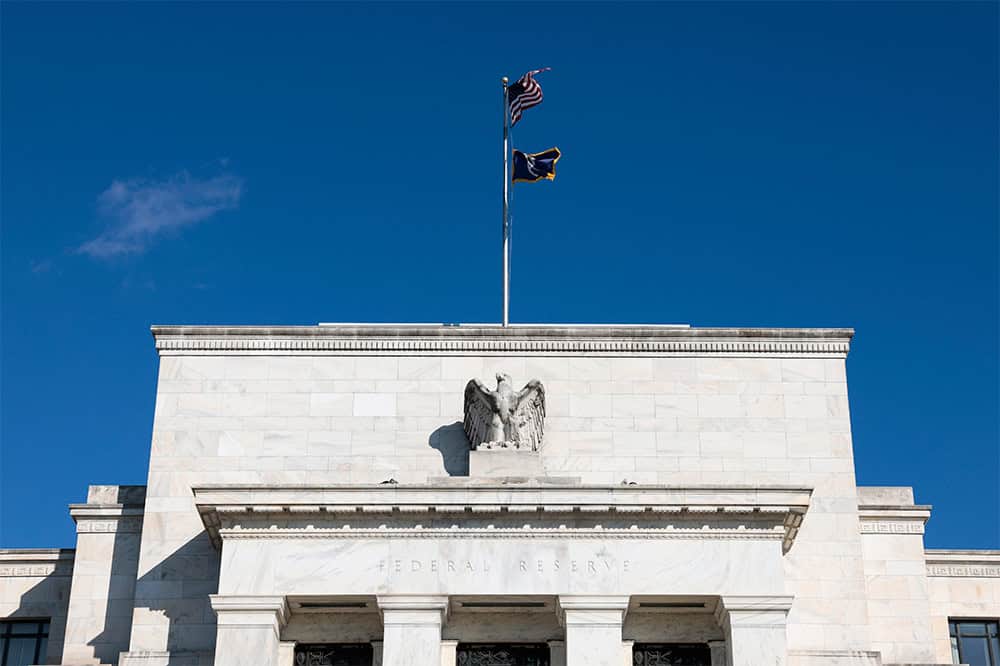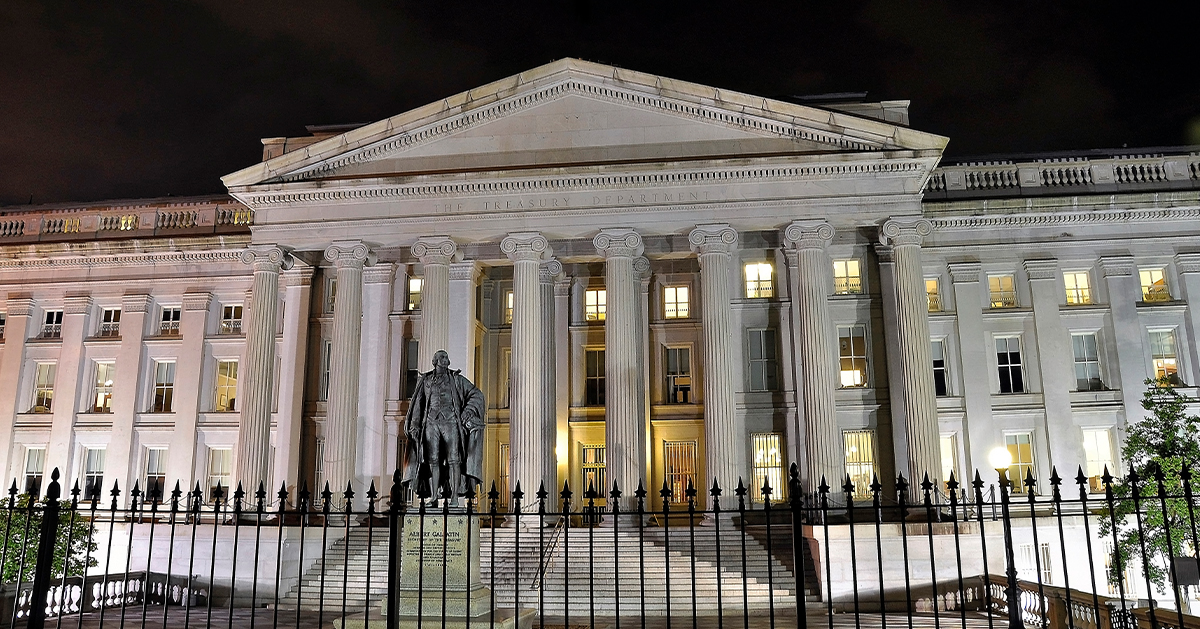National Debt to Double in Size and Other Key Takeaways from the Latest CBO Report
Last Updated March 4, 2021
Today, the nonpartisan Congressional Budget Office (CBO) released its Long-Term Budget Outlook, which offers a look at the nation’s fiscal health through 2051. The report highlights the structural misalignment in the country’s budget and the resulting unsustainable fiscal trajectory.
Here are 5 key takeaways from CBO’s latest projections.
1. Debt will nearly double in size. Debt held by the public equaled the size of the economy in fiscal year 2020, and CBO expects that it will continue to climb — from 102 percent of gross domestic product (GDP) in 2021 to 202 percent in 2051.
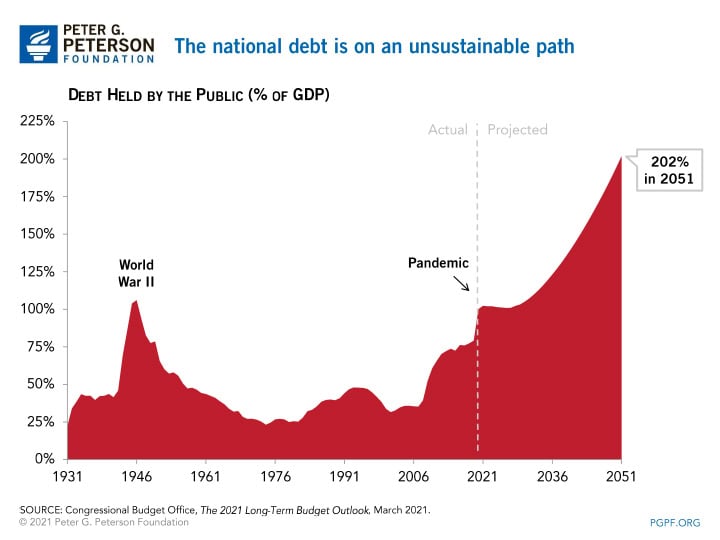
2. There’s an ongoing mismatch between revenues and spending. The COVID-19 pandemic has exacerbated the nation’s fiscal trajectory; however, the underlying structural mismatch between spending and revenues will be the primary driver behind the nation’s growing deficits in the future. CBO projects that outlays will decrease from 26 percent of GDP in 2021 to 22 percent in 2022 before gradually rising to 32 percent of GDP in 2051. CBO also projects that revenues will rise slightly over the next 30 years relative to the size of the economy, but at a slower pace, reaching 19 percent of GDP in 2051.
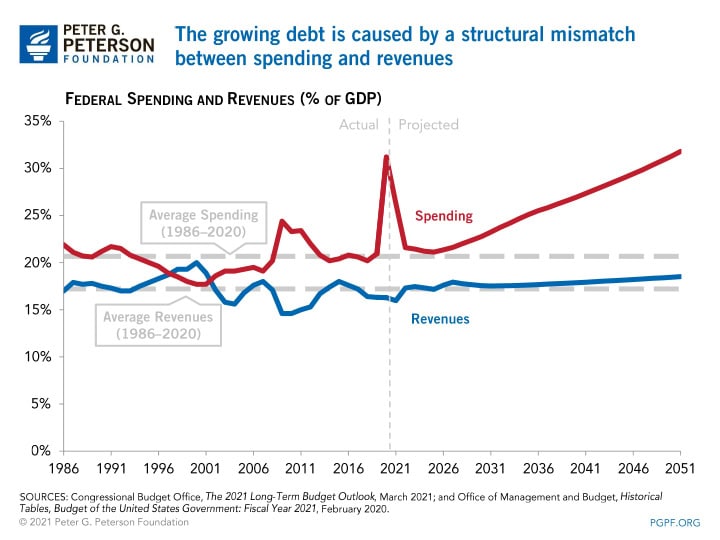
3. Growth in the debt and rising interest rates will push interest costs up substantially over the 30-year horizon. CBO projects that interest costs will grow dramatically from 1.4 percent of GDP in 2021 to 8.6 percent in 2051. In the past 50 years, net interest has averaged 2 percent of GDP; the high for the category was 3.2 percent in 1991.
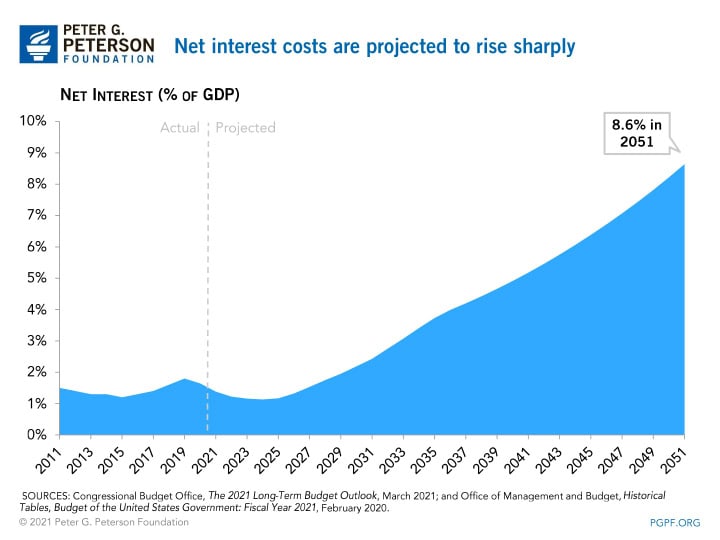
4. In fact, net interest will become the fastest growing component of the budget. Net interest, along with Social Security and Medicare, will drive up spending in the long term.
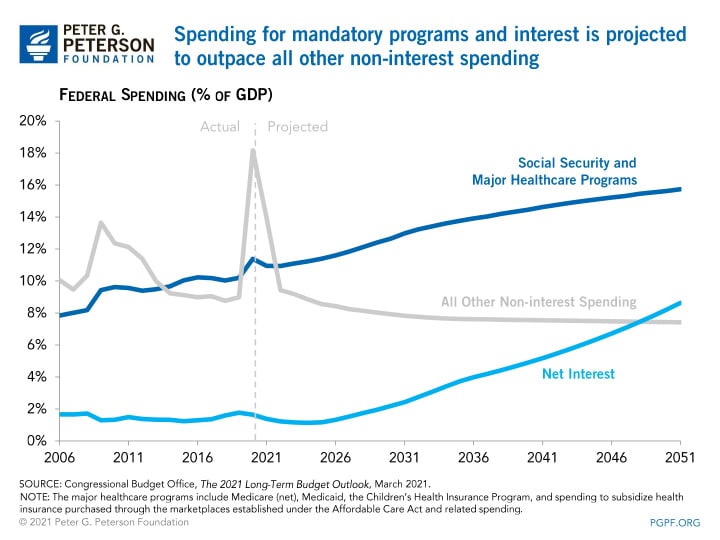
5. The Old Age and Survivors Insurance trust fund will be depleted in 2032. Other trust funds also face depletion. CBO estimates that the Disability Insurance trust fund will be depleted in 2035 and Medicare’s Hospital Insurance trust fund will be depleted in 2026.
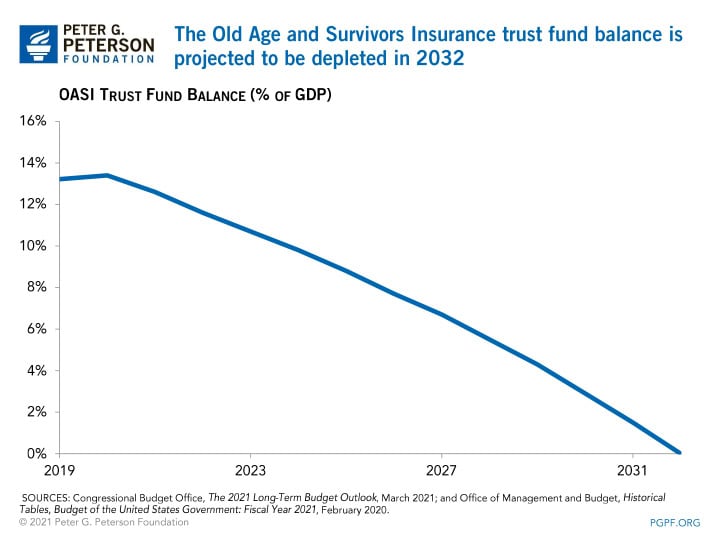
As the COVID-19 pandemic continues to unfold, significant health and economic issues will persist. However, after those hurdles have been cleared, attention will need to shift back to addressing the alarming long-term budget trajectory that is outlined in this new CBO report.
Image credit: Photo by Brandon Bell/Getty Images
Further Reading
What Is R Versus G and Why Does It Matter for the National Debt?
The combination of higher debt levels and elevated interest rates have increased the cost of federal borrowing, prompting economists to consider the sustainability of our fiscal trajectory.
High Interest Rates Left Their Mark on the Budget
When rates increase, borrowing costs rise; unfortunately, for the fiscal bottom line, that dynamic has been playing out over the past few years.
Debt vs. Deficits: What’s the Difference?
The words debt and deficit come up frequently in debates about policy decisions. The two concepts are similar, but are often confused.

